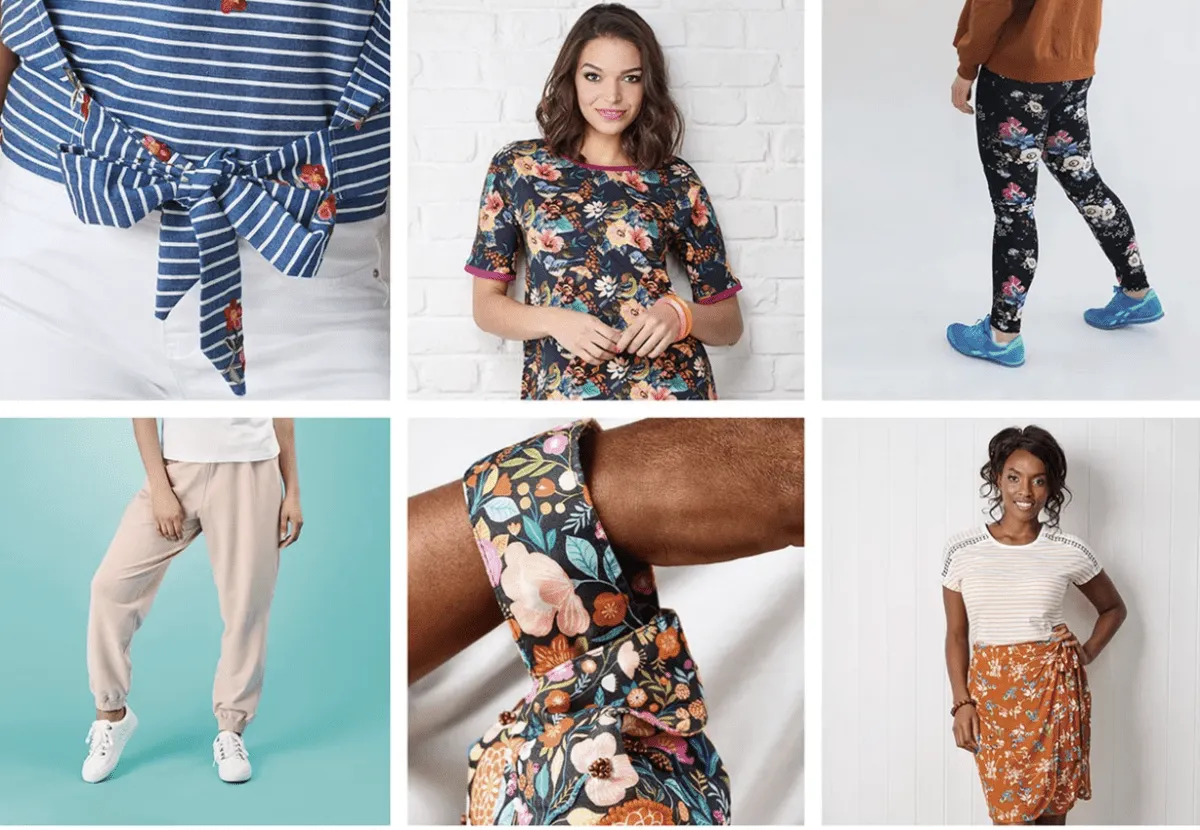A complete guide to sewing for beginners
Welcome to your complete guide to sewing for beginners! There's everything you need to become a sewing pro in this article, with lots of practical advice, tips and video classes to help you get started.
We also have lots of great tutorials across the Gathered website, so we'll direct you to more in-depth articles for the various techniques as well.
In this guide, we'll explore some basic techniques to help you learn how to sew, whether you're using a sewing machine or stitching by hand.
We'll explain the materials you need to create stunning sewing projects and talk you through some basic skills – you'll be sewing like a pro in no time!
Follow the links below to jump straight to a section of our beginner's guide to sewing that you're interested in:
Sewing for beginners: where to start
- Sewing essentials for beginners
- What is the easiest thing to sew for beginners?
- Sewing patterns for beginners
- What are basic sewing skills?
- How to hand sew
- What thread should I use for sewing by hand?
- Types of hand sewing stitches
- Choosing a sewing machine
- How to thread a sewing machine
- Types of sewing machine stitches
- Sewing machine tips and tricks
- Pick up some new sewing tools
- How to make your own patterns
Sewing essentials for beginners

So what do I need to start sewing? Here, we'll look at what equipment you'll need before you begin.
Sewing is one of the most accessible crafts to try and you can get started with minimal supplies if you want to stitch by hand. Basic sewing kits are available in craft shops and even supermarkets if you need to mend clothes in a hurry.
However, if you want to do more than darn a sock, it's a good idea to assemble your own personal sewing stash.
You won't need all of the supplies listed here, but they might come in handy! Here are a few things to add to your sewing supplies:
- Needles
- Thread
- Pins
- Pin cushion
- Sewing scissors
- Pattern weights – used to stop your fabric moving around while you're cutting out a pattern. These are easy to make yourself with our DIY pattern weights tutorial
- Measuring tape
- A needle threader
- Seam ripper – used for pulling out seams. Use this if you're reusing fabric from old clothes or if you make a mistake when working with a sewing machine
- A rotary cutter – this tool, which looks a bit like a pizza cutter, makes it easy to cut out your pattern pieces. We like this Fiskars rotary cutter available from Amazon for £14.47.
- A sewing machine
- Fabric markers – these are used to mark your patterns onto your fabric. Check out our fabric markers guide to find the right one for you
Need more inspiration? Take a look at our sewing kits for beginners guide, which features lots of great kits and projects to help you get started.
What is the easiest thing to sew for beginners?
If you're new to sewing, you're probably asking yourself: what should I learn to sew first?
It can be tempting to dive straight into an ambitious project right away, but it's best to start with something small or simple and work your way up to sewing your own ballgowns!
One of the first things most sewers will learn to make is something simple like a cushion cover. This is a great project to try, because it allows you to practice basic sewing skills and whip up your first pattern very quickly.
Cushion covers are a simple shape to sew and it's unlikely that any errors will be noticeable. Have a go at our how to make a cushion cover guide to discover four different ways to sew your own.
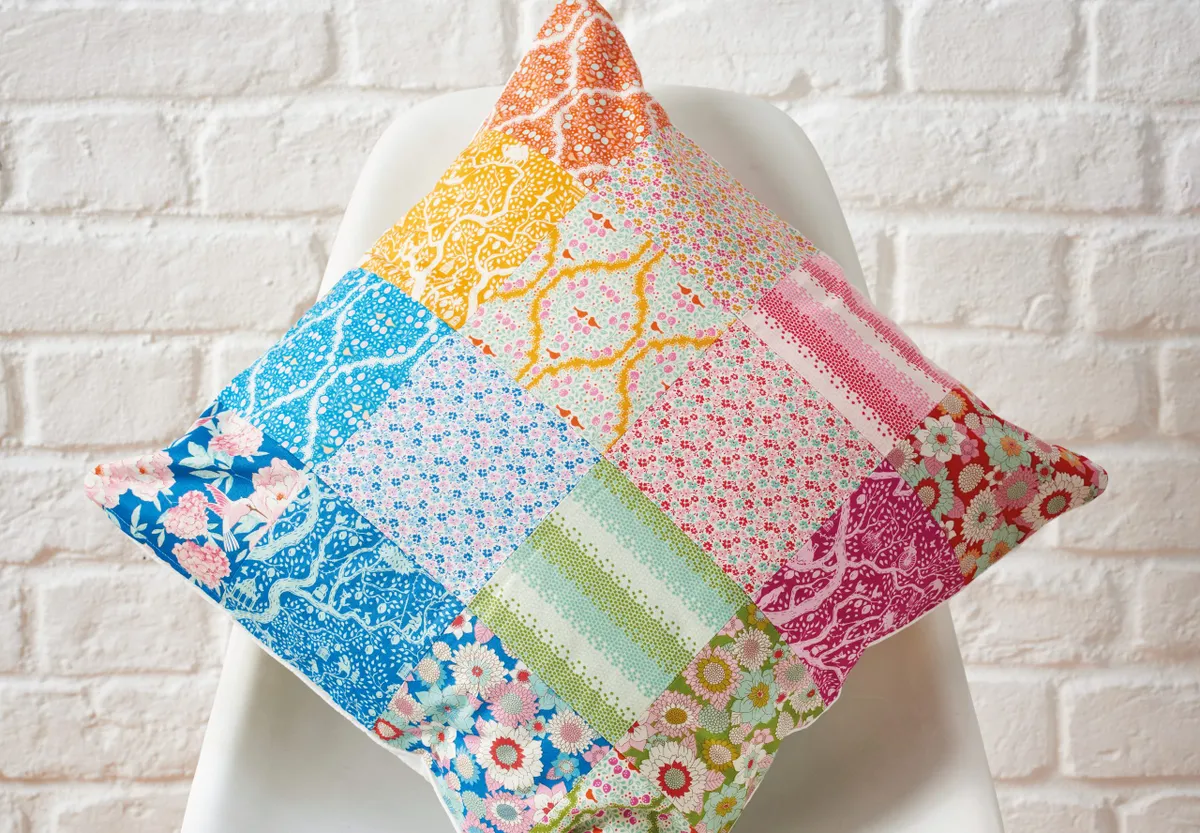
Sewing patterns for beginners
Here are a few more easy sewing patterns to inspire you…
- DIY bookends – these are simple to make and will stop your books from sliding off the shelf!
- Duffle bag pattern – this bag design is both pretty and practical.
- How to make bunting – plan a party and whip up your own bunting.
- How to make a star cushion – these stellar cushions would be perfect for a child's bedroom.
- How to sew fabric heart decorations – this easy free tutorial includes a video guide.
We've also put together a collection of sewing patterns for beginners to help you develop your sewing skills.

You can find a range of inspiring beginner sewing projects to try in the new gathered shop.
What are basic sewing skills?
When you're learning to sew, it can feel as though there's a lot to take in, but we have lots of sewing guides for beginners to help you get started. Our how to sew section here on Gathered covers all the basic techniques and plenty of expert ones too!
Start off by learning how to use a sewing pattern – an essential skill for any sewer. If there are any terms or jargon that you find confusing, take a look at our sewing glossary to help you follow the pattern.
Before you start making a pattern, it's a good idea to check what type of fabric you should use – or your pattern might not turn out the way that you expected. Explore our sewing fabrics guide to decide which materials to use for your sewing project.
Here are 6 basic sewing skills to learn:
- How to sew a button – if you only learn one skill, then make it this one! It might save the day if you have a fashion emergency.
- How to sew buttonholes – an essential dressmaking skill.
- How to use a sewing pattern – this great guide covers everything you need to know.
- What fabric should I use? – choosing the wrong fabric can ruin your sewing projects! Learn how to pick the right fabric with this expert guide.
- How to sew jersey fabric for beginners – sewing stretchy jersey fabric is very challenging. This helpful guide will show you how to get to grips with this tricky fabric.
- Embroidery for beginners – adding a few decorative details to a sewing project can really take it to the next level. You can use embroidery to add a pretty motif, add a name to a gift or even stitch a face onto a soft toy.
Other sewing skills to master
As you become a more experienced sewer, you can try trickier sewing techniques and learn to adjust your own clothes to get a perfect fit.
- How to sew a hem and how to hem pants – hemming a pair of trousers is an essential skill for those of us who struggle to buy trousers off the shelf. Use our step by step guide to master the technique.
- How to sew gathers – if you're a fan of the Great British Sewing Bee you'll have seen lots of gathers on the show! Gathers can be used to create skirt waistlines, ruffled sleeves and much more. If you want to make your own clothes, this is a really handy skill to learn. We have collected a range of sewing techniques which were featured on the show too.
- How to sew pleats – add some style to your sewing projects by learning how to make pleats.
- How to insert an invisible zip – give your outfits a professional finish by inserting an invisible zip.
- How to sew with elastic – sewing with elastic is tricky, but this is a very useful skill to master.
- How to sew a pocket – this is a great way to upcycle a garment.
- How to make ruffles – add a flourish to your outfits with this fun technique.
- How to sew a zipper – give your garments a fitted, professional look with zips! Once you've mastered the basic zip you can move on to learning how to sew an invisible zip.
How to hand sew

Picking up a needle and thread years after school finished might seem a bit daunting. We’ve all met someone who claims to not know how to sew a button, but according to research, 60% of Brits can’t!
Along with sewing a button, stitching a straight line of stitches is an incredibly useful skill to have. Learn this essential skill and you could hem a pair of trousers by hand, fix a hole in the seam of your favourite top or attach an appliqué patch to a denim jacket.
Here, we’re going to take you back to the classroom and explain how to hand sew…
What thread should I use for sewing by hand?
Thread is available in many forms with the big manufacturers offering a wide range of colours to suit any project. While it might be tempting to pick up a bargain thread pack, we always recommend buying brand name threads due to their lengthy development and testing process.
Thread that is weaker or poorly spun can break and tangle easily – which isn’t what you need when your concentrating on getting the perfect stitch!
Use a thread that matches your fabric as closely as possible so the stitches can’t be seen. If you’re working tacking stitches, though, it’s best to use a contrasting thread so it’s easy to see when removing them later. A polyester thread or poly-cotton mix is best as it’s stronger than pure cotton.
Brands that we love include Gutermann, Coats and Madeira. You can buy multipacks of threads which will come with a variety of basic colours to get you started. We recommend this Guttermann assortment pack from Amazon.

SQUIRREL_13196778
What needle should I use for sewing?
The needle you choose is just as important as the thread. The needle will guide the thread through the fabric, so it is important that it has the correct tip and eye as well as being a comfortable length to hold in your hand.
Use a sharp needle with an eye large enough so the thread goes through easily, but not too big so it slips out while you’re stitching. The smaller and finer the needle the better, as you’ll get neater stitches and it will pierce the fabric threads rather than snagging them. A crewel needle is ideal for this.
Before you begin sewing, very carefully brush the tip of the needle over your finger. If you feel any jagged parts or notice any rust or bends along the needle shaft it’s time to grab a new needle. Bent needles or needles with chipped ends could snag your fabric and cause the thread to tangle.
Needles come in a variety of sizes and lengths. You will need a different needle if you are sewing with specialist fabrics such as leather or jersey. For basic fixes on light to medium weight fabrics we love these John James needles.
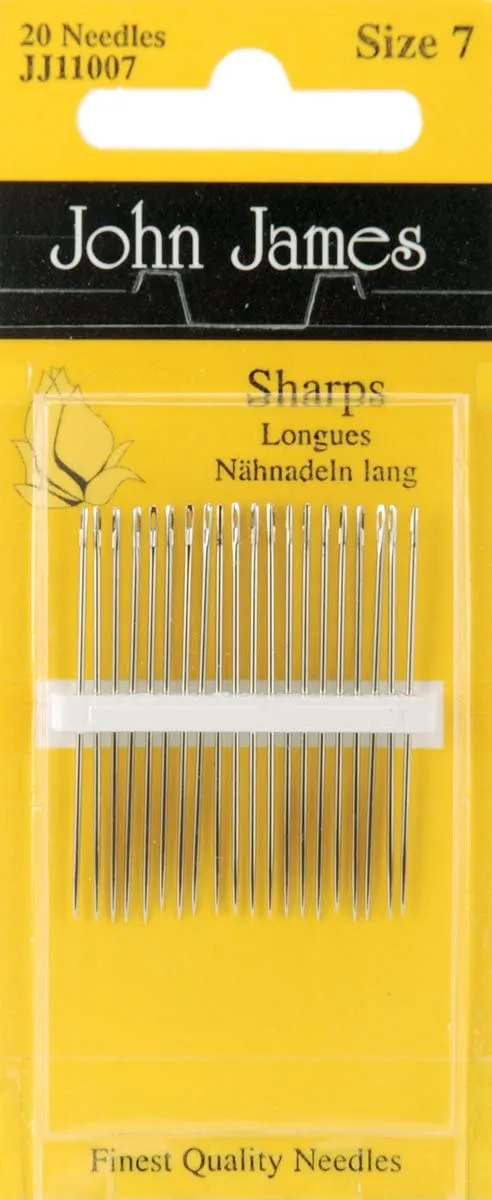
SQUIRREL_13076918
How to sew by hand
1. Cut a length of thread that is approximately the length of your forearm. Any longer and you will struggle to pull it all through the fabric and risk the thread getting horribly tangled.

2. Now that you’ve selected a quality needle and thread you will need to prepare for sewing. First of all, we will tie a knot in the thread end. There are several ticks for doing this, but a small knot tied near the end of the thread will work just fine.
3. Now we will pass the untied end of the thread through the needle. If you’re longsighted, pop your glasses on so you can see the eye of the needle clearly!
Some people find that moistening the tip of the thread can help to pass it through the eye of the needle. If after several attempts you are struggling, you can trim off the frayed tip of the thread and attempt to thread the new, neater thread end again.
How to thread a needle
There are two ways of threading your needle, depending on the stitch you’re working:
- Single thread: This is used for most hand stitches, especially those that you want to be invisible. Cut the thread to the length you need then thread it through the eye and knot the end if you want to start off that way.
- Double thread: This is used for stitches that need to be strong and secure, such as running stitches for gathering. Cut the thread twice the length you need then fold it in half and thread the two ends through the eye of the needle. The loop that’s left at the other end can then be used to slip the needle through after the first stitch has been made for a really secure knotless start.
If you are really struggling, you might find that a needle threader gets the job done quicker.
SQUIRREL_13196800
A basic sewing kit will often include a needle threader and they're very handy if you find threading a needle difficult to do. Not sure how to use a needle threader? Check out our how to use a needle threader guide.
Types of hand sewing stitches
When you're sewing by hand, there are lots of stitches you can learn, to make sure your projects look beautiful and neat. You can also learn embroidery to add an extra flourish to all of your makes. Take a look at our embroidery for beginners guide to get started.
Running stitch
This stitch is handy for adding top stitching to garments, fixing rips and mending clothes and edging embroidery designs.
It's similar to tacking and is used for decorating a finished project or for gathering fabric. Bring your needle up and down through the fabric to create regular stitches.
Make sure that all the stitches are the same length and the spaces between them are that length too for a neat stitch. Read our guide on how to do running stitch to become a pro.

Backstitch
Backstitch is a great stitch for mending seams in garments or for hand sewing a seam that needs to be secure.
The stitches should all be the same length with no gaps between them – the smaller your stitches the more secure you will make your seam.
This is a strong stitch and ideal for working any small fiddly parts of seams that you can’t reach with your sewing machine, particularly when mending. Read our guide on how to do backstitch.
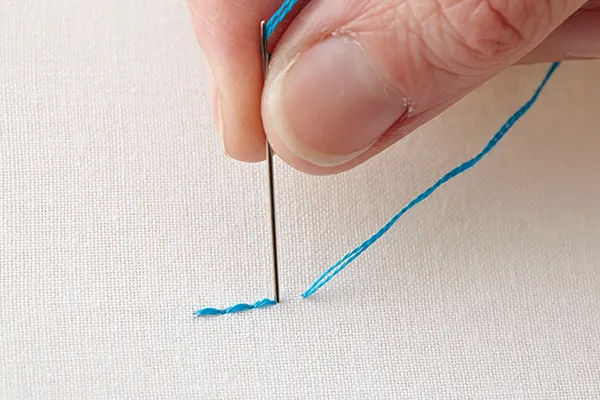
Cross stitch
Cross stitch is an embroidery stitch worked on a gridded fabric where two small stitches cross to make and ‘x’. Stitching lots of these little crosses creates beautifully detailed scenes.
Learn the basics with our Cross stitch for beginners guide.
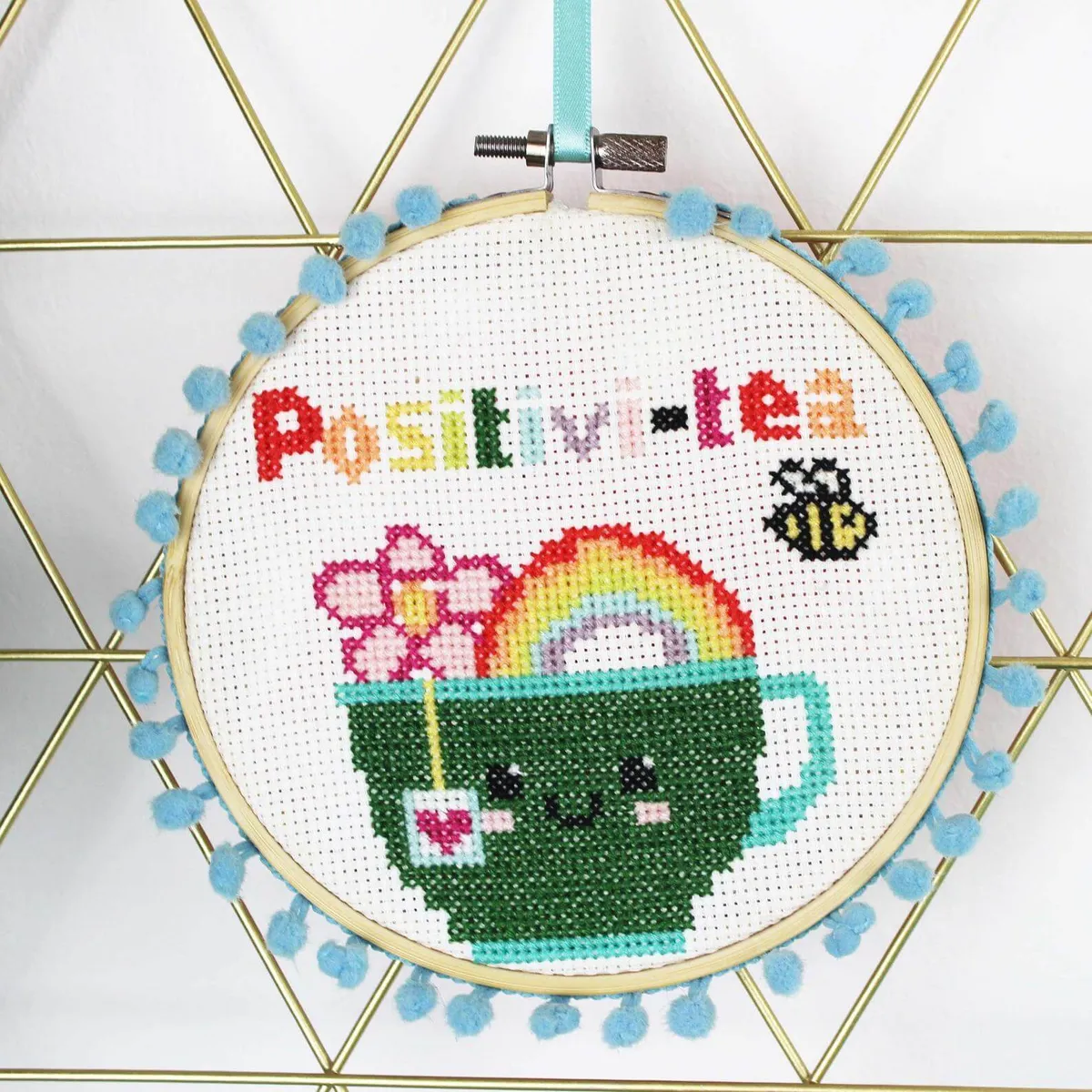
Satin stitch
Satin stitch is a great stitch for embroidery work as it allows you to fill in an area with colour. This stitch is great for floral projects as you can work in multiple shades to build up a life-like effect. Learn how to do this stitch in our beginners guide to satin stitch.
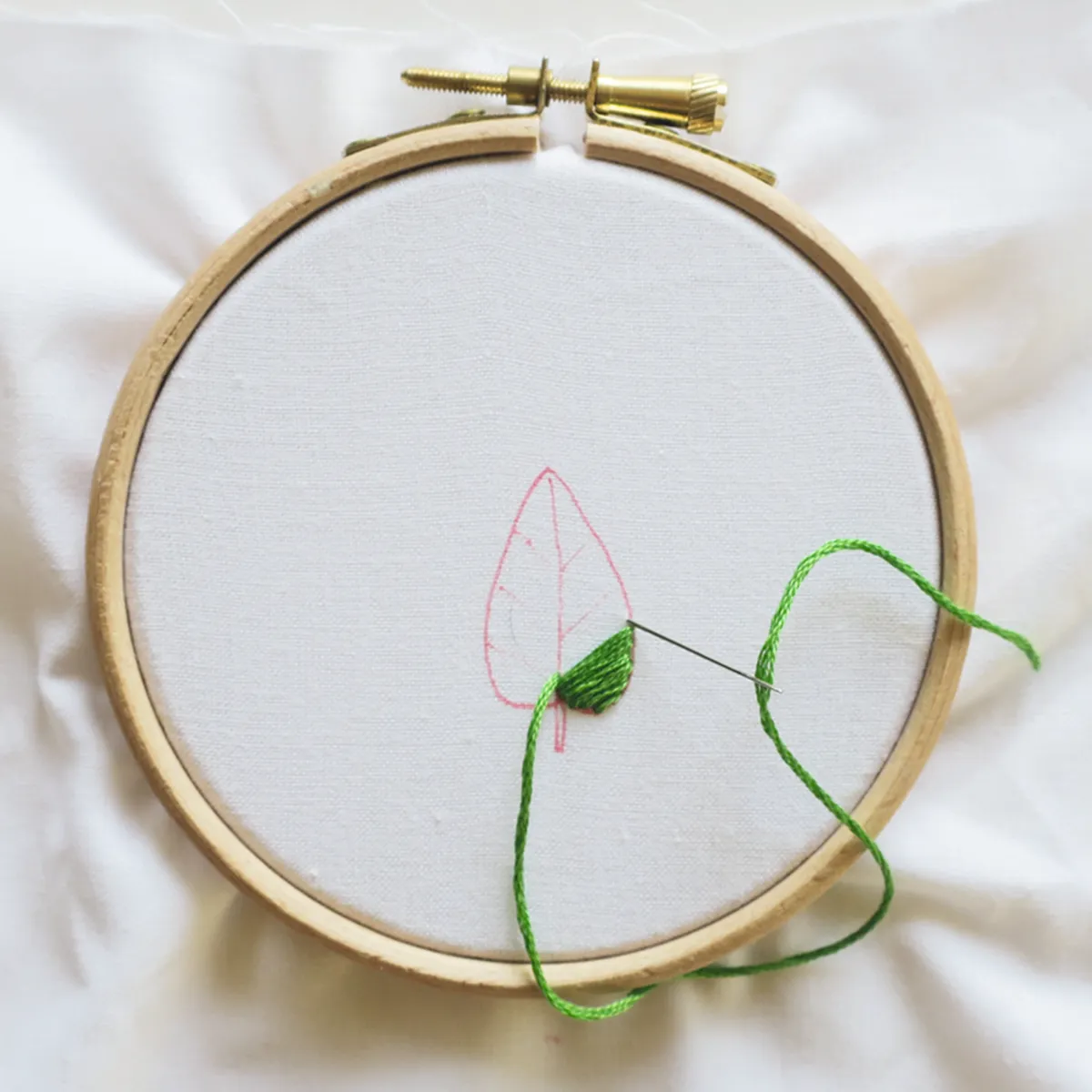
Seed stitch
Seed stitch is a great beginner stitch to master as it allows you to fill space in your work in an effective way. The confetti style stitch is great for shading and adding depth to the colours in your work. Check out our beginner’s guide to seed stitch.
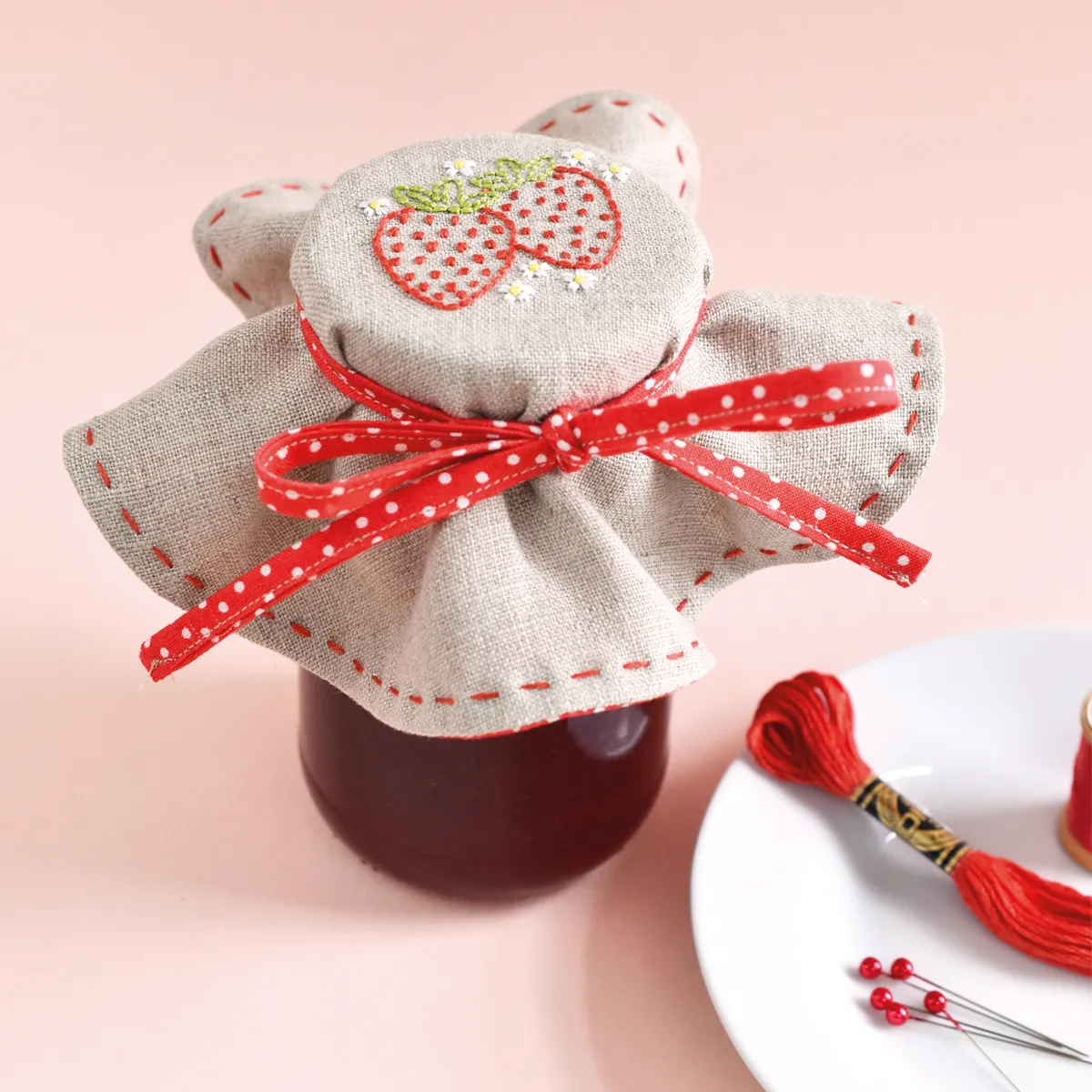
Split Stitch
Split stitch is a great stitch for borders or outlines and looks fantastic when used to embroider words. The textured effect of the stitch adds depth to your work.
Find out how to work split stitch here.
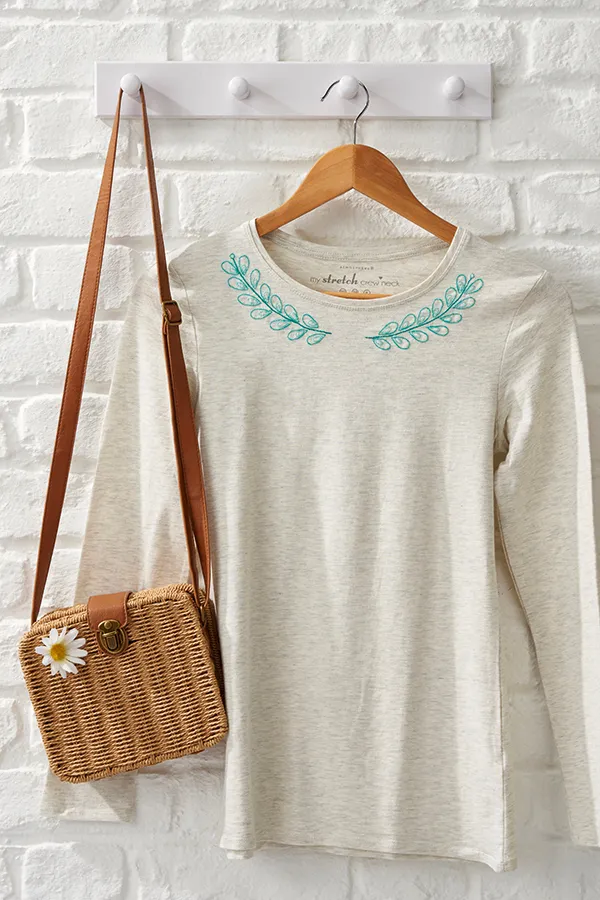
Lazy Daisy Stitch
Lazy daisy stitch is a quick and easy stitch to master. Once you’ve got the hang of it, you’ll be stitching flowers in no time!
Find our guide to lazy daisy stitch here and instructions on how to turn your stitches into a cute summer headband.
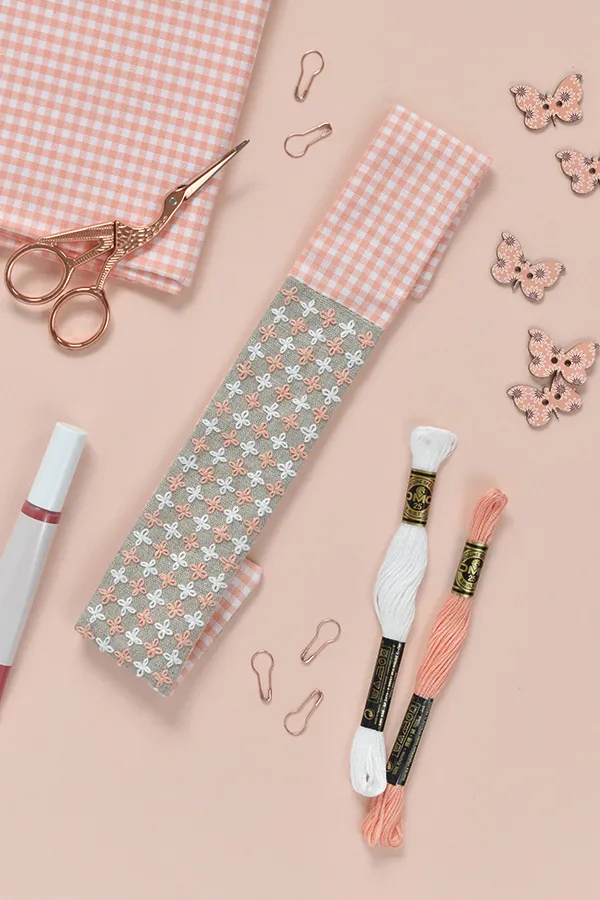
Feather stitch
Feather stitch is a great stitch to add to your embroidery repertoire. This delicate stitch resembles, you guessed it, a feather, but is also brilliant for floral designs.
Learn how to work the stitch in our feather stitch guide.
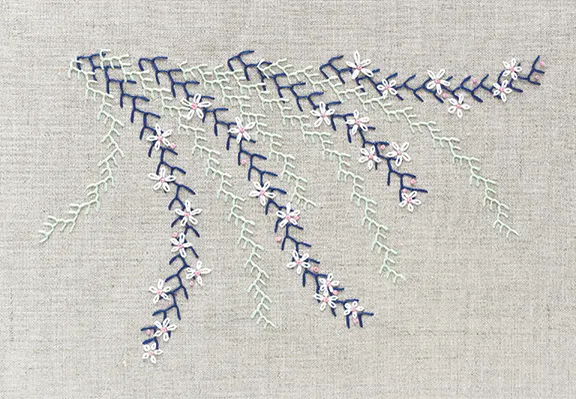
French knots
Once you’ve mastered these pretty embroidery knots using our tutorial, you’ll be chuffed to bits.
French knots look brilliant in every kind of embroidery project and have got to be one of the most satisfying stitches out there!

Bullion knots
These long knots make fantastic roses and add depth and texture to your embroidery work.
Follow our guide and learn how to make a super sweet hanging decoration in our bullion knot tutorial.
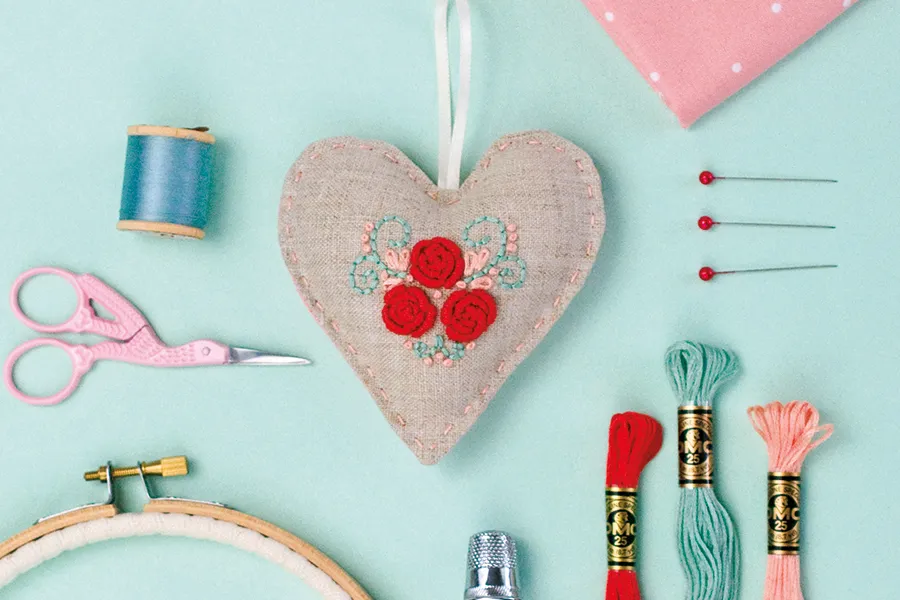
Choosing a sewing machine
If you’ve ever had a go at hand sewing a hem, mending a hole in a seam or attaching appliqué patches by hand, you’ll know how much a sewing machine can both speed up and neaten the process.
Buying your first sewing machine is a big investment. While there are affordable options on the market, you will be looking at spending around the £100 mark for a beginner machine, so it’s important to do your research and read reviews before taking the plunge.
Explore our what to look for when you're buying a sewing machine guide for lots of tips to help you buy the right one, or check out our complete sewing machine guide for even more handy info.
We’ve listed three of our favourite machines below and we also have a whole article about the best sewing machines for beginners for you to check out.
1) Singer Start 1306

SQUIRREL_13078856
The Singer Start has been designed for absolute beginners. It has a simple design, and has the basic features you need to begin machine sewing.
It comes with 6 built-in stitches plus a four-step buttonhole.
When you're ready to take the next step in your sewing journey, check out our collection of the best overlockers!
2) Brother LS14S
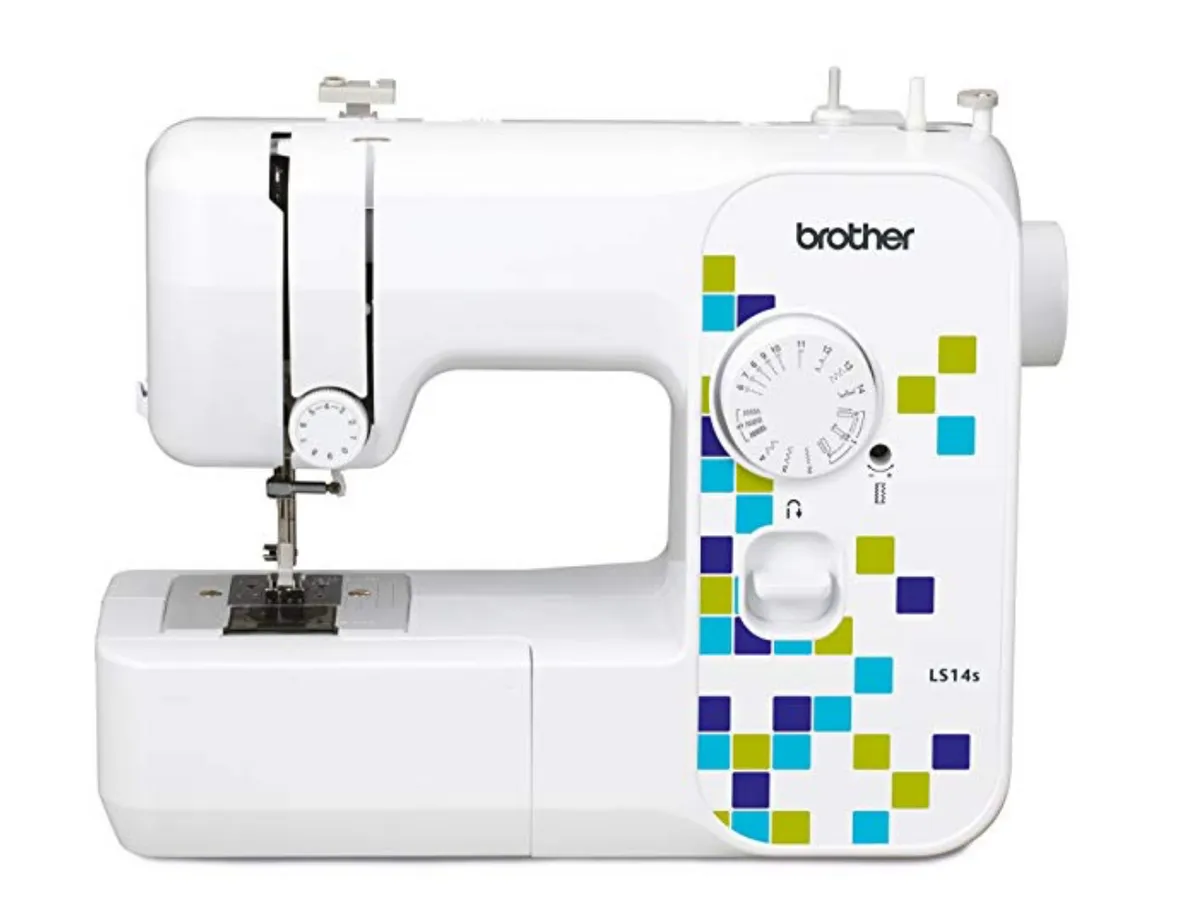
SQUIRREL_13076917
A great choice for a beginner who wants to tackle a range of sewing projects. The machine has a choice of 14 stitches, a 4-step buttonhole and a top-loading bobbin.
If your little one has been inspired to get sewing too, then check out these best sewing machines for kids.
3) Singer 4423 Heavy Duty Sewing Machine

SQUIRREL_13076766
The Singer 4423 is a heavy-duty sewing machine that is built to last. Its strong motor enables it to sew through multiple layers of fabrics or thicker fabrics such as denim or leather.
It has 23 stitches but does not include too many fancy features, making it an easy-to-use machine, perfect for beginners.
We've also rounded up our top sewing machine tables that are great for holding heavy duty sewing machines.
Understand your sewing machine better
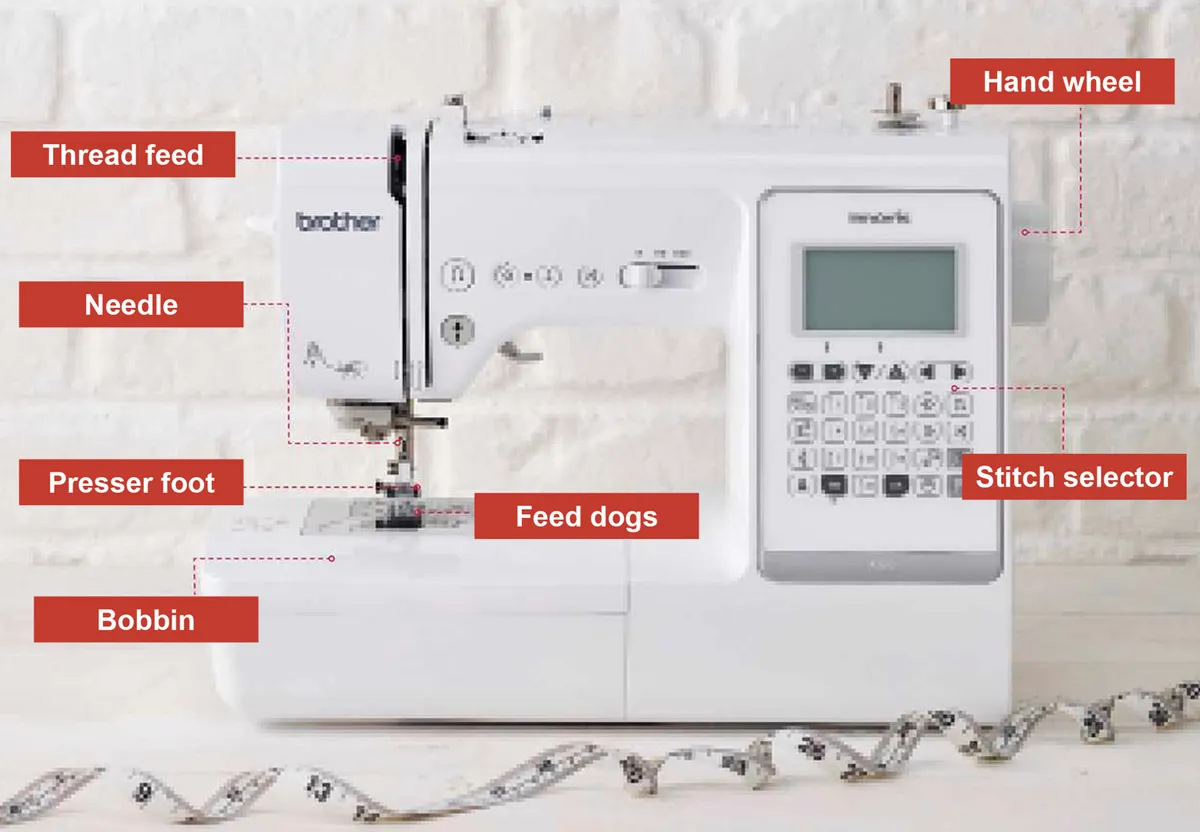
Once you've purchased your new sewing machine, it's time to get acquainted with it!
Our guide shows you how to get to know the parts of a sewing machine. It covers all the inner workings, mechanics, and more.
How to thread a sewing machine
You’ve finally got your new sewing machine set up and can’t wait to get stuck into your first project… But then you take a look and realise there are far more knobs, dials and arrows than you expected (and who has time to read the entire manual eh?)
Before you dive in and end up with a tangle of threads, follow our simple how to thread a bobbin guide and get your sewing journey off on the right foot!
Our guide covers:
- Getting started
- How to wind a bobbin
- Threading the machine
- Inserting the bobbin
- How to select your stitch lengths
We also have a YouTube series that covers how to thread a sewing machine.
What thread should I use for my sewing machine?
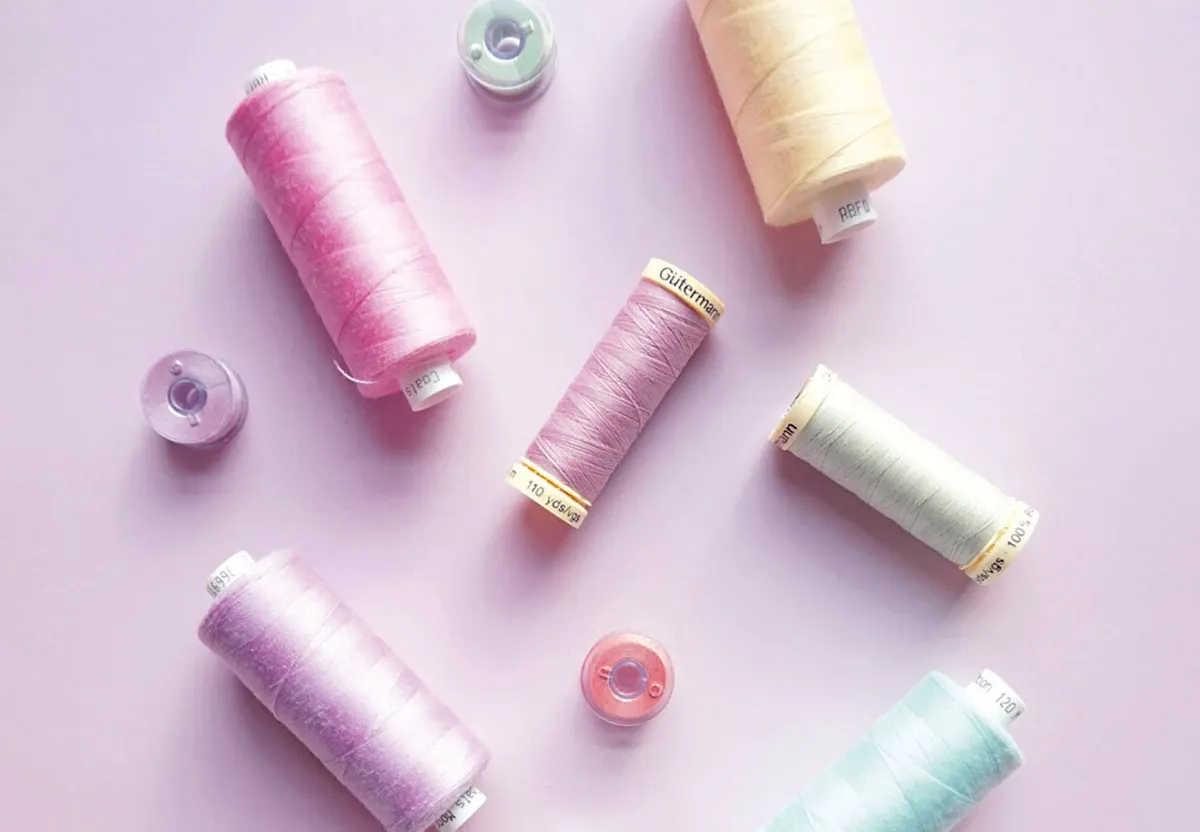
We have created an essential sewing machine thread guide to help you find the perfect thread.
Our guide covers everything from how to read a spool to the different types of thread.
Types of sewing machine stitches
Straight stitch

Straight stitch will be the most commonly used stitch on your machine. This basic stitch is the foundation for all seams. You can adjust the length of this stitch, 3mm is a great starting point but 4-5mm is ideal for machine tacking.
If your machine allows you to change the width of this stitch, this will simply alter the needle position.
Lock-a-matic stitch
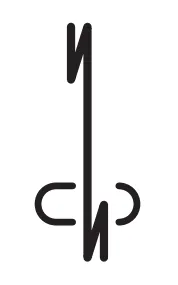
Selecting this stitch will mean that your machine will automatically ‘lock’ the stitch at the start and end. This will stop the thread unravelling and eliminates messy backtacking.
Straight stitch with locking stitches
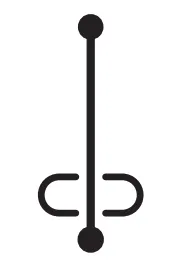
This stitch invisibly ‘locks’ the stitch at the start and end. This is similar to lock-a-matic stitch, but the locking stitches are performed on-the-spot, so provide a more invisible finish.
Zig zag stitch

Zig zag stitch can be used for finishing seams, for sewing with stretch fabrics such as jersey and Lycra and can also be used to attach elastic. You can alter the width and length of this stitch.
3-step zig zag stitch

3 step zig zag stitch is a less frequently used but essential stitch. It is a common addition to all but the most basic machines and is used, like zig zag stitch, to attach elastic. This stitch allows for more stretch than a regular zig zag stitch.
Lightning stitch/stretch stitch
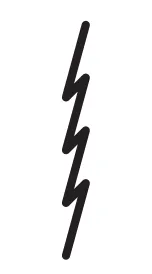
This stitch is ideal for sewing with stretch fabrics. The lightning bolt look of the stitch almost resembles a straight stitch when it is sewn on fabric, however the slight zig zag allows the stitches to stretch with the fabric. A really useful stitch, give it a go on your next stretch fabric project.
Overlock / overedge stitch
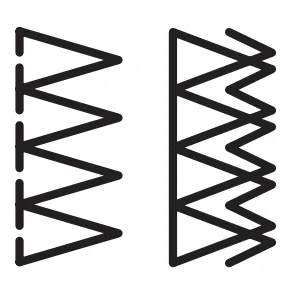
If you don’t have an overlocker, this stitch is ideal for finishing the raw edges of fabric. Your machine might have varying overlock stitches as the basic principle is a stitch that overlaps the edge of the fabric. A special foot is usually required for this stitch, but your manual will be able to tell you which foot is needed.
Blind hem stitch
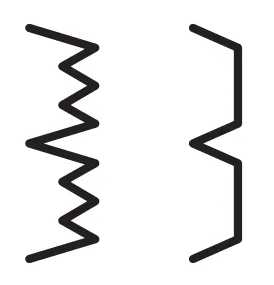
If you want to stitch a blind hem (a neat hem finish that leaves a faint stitch line on the right side of the fabric) there is a special stitch on your machine that will do this for you.
The fabric needs to be fed through the machine in a specific fold pattern so refer to your manual if you want to give this stitch a go.
Decorative stitches

Decorative stitches come in many styles. They are often used in quilting, but you can also use them to decorate home décor pieces or even garment hems!
From leaves to hearts to snowflakes, decorative stitches will be numerous on machines with a greater number of stitches.
Buttonhole stitches
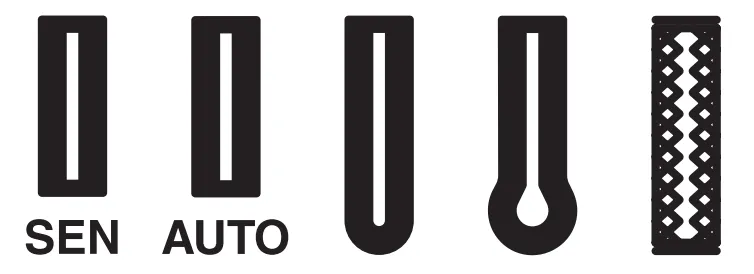
If your machine can perform a one-step buttonhole you will need to select the specific stitch for the task.
If your machine is electronic (with no screen) then you will usually need to turn a stitch selector dial to stitch the top, bottom and sides of the buttonhole separately.
One-step buttonholes require you to use a specialist buttonhole foot. Some machines will come with the foot, so you can get started straight away.
More tips and tricks for your machine
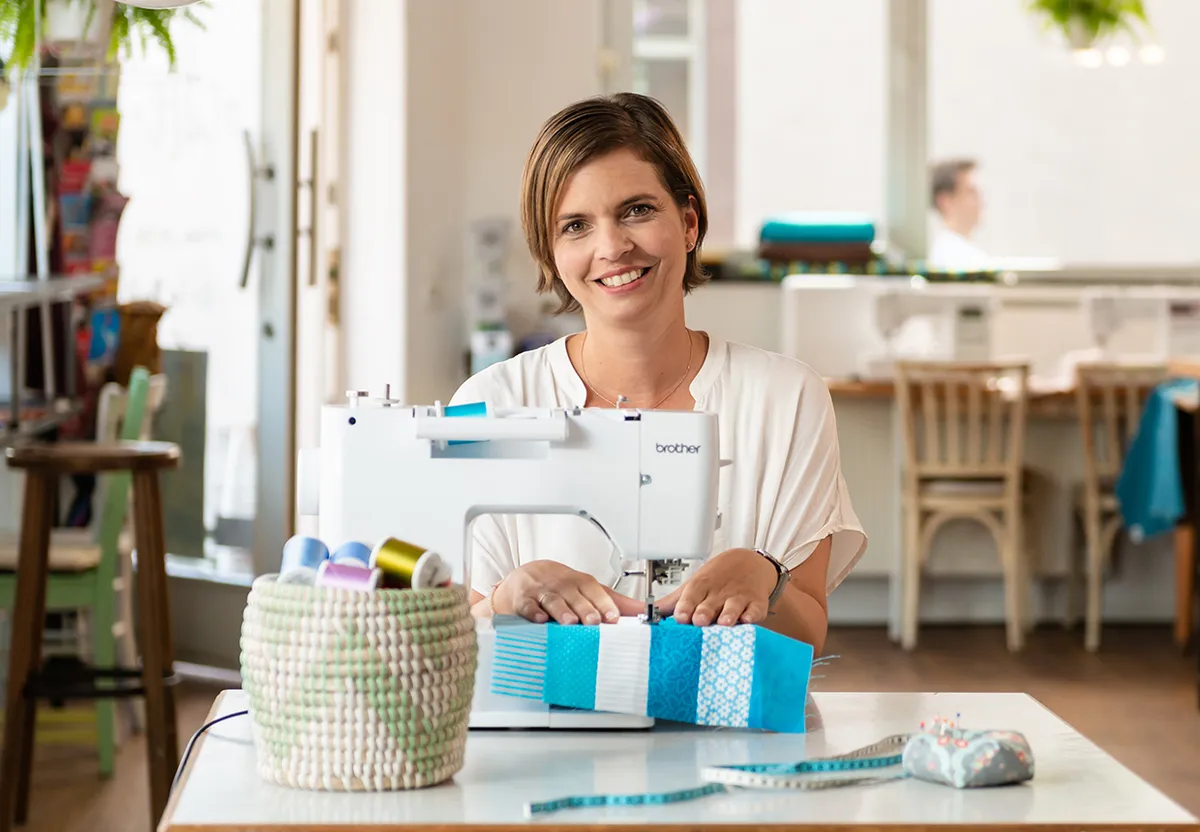
We've covered all the sewing essentials for beginners but there's always more to learn!
Our sewing machine tips and tricks article is full of expert advice from experienced sewists. Have a browse and use your sewing machine more efficiently.
Pick up some new sewing tools

Now you've got to grips with your sewing machine, why not pick up some tools to help you? There are plenty of different tools which are beginner-friendly and cost-effective.
Head over to our complete guide to sewing tools and pick up some new equipment.
Creating your own sewing patterns
Sewing patterns are a huge part of dressmaking. Sewists will often buy premade sewing patterns and adjust them to fit their bodies or some make their own patterns!
We show you every aspect of pattern-making here on Gathered.
How to use sewing patterns
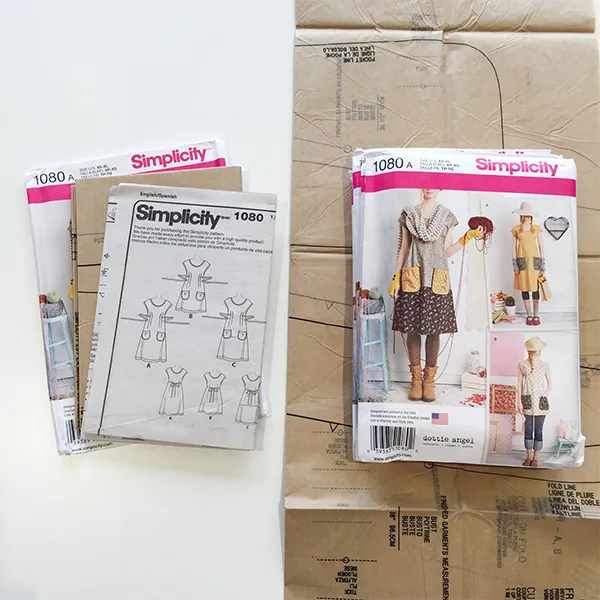
First up, we show you how to use sewing patterns. Here, you'll learn how to read, cut out, and use store-bought patterns.
How to adjust sewing patterns
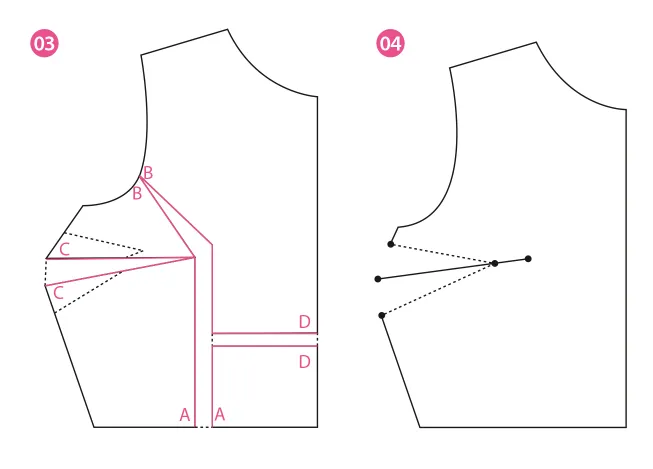
Next, we show you how to adjust sewing patterns. This is a very useful technique as we're all different shapes and sizes! It's also useful if you're making children's sewing patterns.
How to make sewing patterns

The next step in your sewing journey is learning how to make your own sewing patterns.
This can be a little daunting but don't worry! We've created a complete guide on how to make sewing patterns to help you.
How to measure yourself

For those of you wanting to create your own sewing patterns, you'll need to measure yourself first.
We show you how to measure yourself here on Gathered. It's quick and easy to do.
Become a pro sewist in no time
We hope our sewing for beginners guide helps you to become more confident. Practice makes perfect!
Use all our guides and take your sewing journey slowly, mastering one step at a time.
You'll be stitching up a storm in no time... all you need now is a bunch of projects to test your new skills on.
Discover your next sewing project with Gathered
Gathered is full of brilliant sewing patterns for beginners and experts alike.
Head over to our collection of free sewing patterns to find your next inspirational project.
